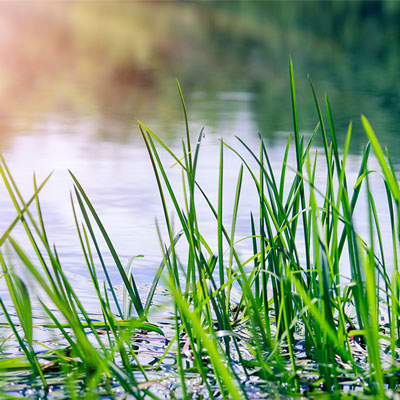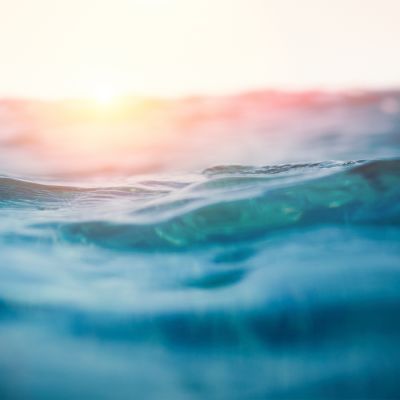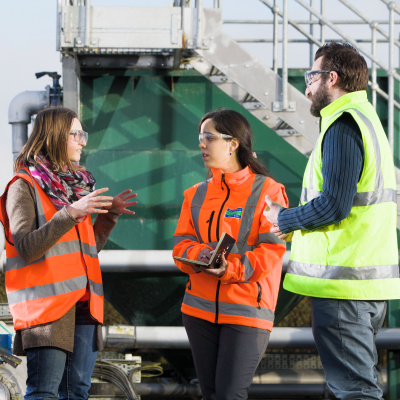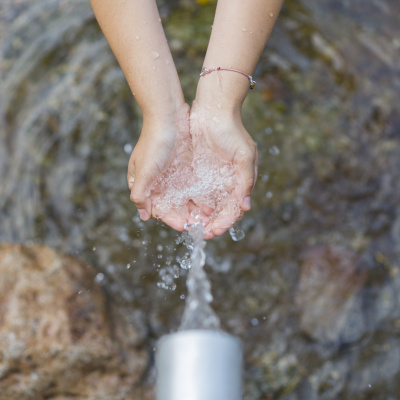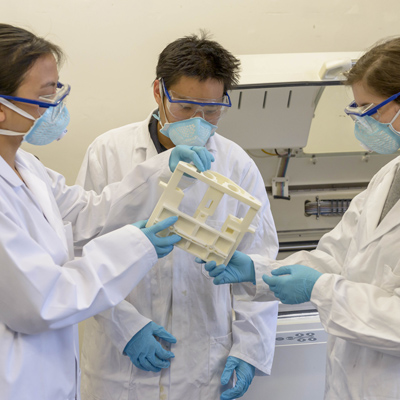Our environment and human health are facing increasing challenges in a changing world. Population growth is projected to intensify water, energy and food requirements, while climate change and increasing industrialisation are aggravating environmental degradation and the risk of hydro-meteorological hazards such as floods and droughts. These big societal challenges require a systems-level approach to finding innovative solutions that deliver the resilient ecosystems humanity relies on for thriving. Nature-based Solutions (NbS) have a critical role to play in helping mitigate climate change impacts, slowing down further global warming, and supporting biodiversity.
Researchers in the Centre for Water, Environment and Development (CWED) have a range of expertise in investigating, developing, enhancing, and enabling implementation of NbS for water and land management. Our research focuses on understanding the natural processes that ultimately determine system behaviour; how to work with them to influence ecosystems at local, regional and landscape scale; and providing robust scientific evidence for NbS benefits to advise industry, government, and environmental institutions on NbS development and applications. As well as research and consultancy, we deliver bespoke training in all these areas as we believe being able to assess potential NbS applicable in different contexts will become a key skill for all designers, regulators, consultants, academics, and NGOs involved in environmental studies.
Research areas
- Constructed Wetlands for water and wastewater management, including micropollutants and Antimicrobial Resistance (AMR)
- Microalgae technology for wastewater treatment and resources recovery
- Water ecosystems restoration and sediment remediation
- NbS for hydro-meteorological hazards risk reduction
- NbS for mitigating climate impact and reducing greenhouse gas emissions
- Quantification of co-benefits of NbS from economic, social and environmental standpoints
Recent publications
Books
Langergraber G, Dotro G, Nivala J, Stein OR, Rizzo A (eds), (2019) Wetland Technology: Practical information on the design and application of treatment wetlands, London: IWA.
Dotro G, Langergraber G, Molle P, Nivala J, Puigagut J, Stein O, von Sperling M, (2017) Treatment Wetlands: Biological Wastewater Treatment Volume 7. IWAP, ed. Volume 7.
Dotro G, Fort RP, Barak J, Jones M, Vale P & Jefferson B (2014) Long-Term Performance of Constructed Wetlands with Chemical Dosing for Phosphorus Removal. In: The Role of Natural and Constructed Wetlands in Nutrient Cycling and Retention on the Landscape, Springer International Publishing, p. 273-292.
Recent peer-reviewed articles
Chen W, Muller P, Grabowski R & Dodd N (2022) Green nourishment: an innovative nature-based solution for coastal erosion, Frontiers in Marine Science, 8 Article No. 814589. Dataset/s: 10.17862/cranfield.rd.17005480
Grabowski RC, Vercruysse K, Holman I, Azhoni A, Bala B, Shankar V, Beale J, Mukate S, Poddar A, Peng J & Meersmans J (2022) The land-river interface: a conceptual framework of environmental process interactions to support sustainable development, Sustainability Science, Available online 13 May 2022.
Benisiewicz B, Momblanch A, Leggatt A, Holman IP (2021) Erosion and Sediment Transport Modelling to Inform Payment for Ecosystem Services Schemes. Environmental Modeling & Assessment, 26, 89–102.
Chazdon RL, Falk DA, Banin LF, Wagner M, Wilson S, Grabowski RC & Suding KN (2021) The intervention continuum in restoration ecology: rethinking the active-passive dichotomy, Restoration Ecology, Available online 21 August 2021 Article No. e13535.
Dale G, Dotro G, Srivastava P, Austin D, Hutchinson S, Head P, Goonetilleke A, Stefanakis A, Junge R, Fernández LJA, Weyer V, Truter W, Bühler D, Bennett J, Liu H, Li Z, Du J, Schneider P, Hack J & Schönborn A (2021) Education in ecological engineering – A need whose time has come, Circular Economy and Sustainability, 1 333-373.
Pan M, Lyu T, Zhan L, Matamoros V, Angelidaki I, Cooper M & Pan G (2021) Mitigating antibiotic pollution using cyanobacteria: removal efficiency, pathways and metabolism, Water Research, 90 (February) Article No. 116735.
Lyu T, Song L, Chen Q & Pan G (2020) Lake and river restoration: method, evaluation and management, Water (Switzerland), 12 (4) Article No. 977.
Momblanch A, Beevers L, Srinivasalu P, Kulkarni A, Holman IP (2020) Enhancing production and flow of freshwater ecosystem services in a managed Himalayan river system under uncertain future climate. Climatic Change, 162, 343–361.
Barak J, Dotro G & Jefferson B (2019) The role of concentrations gradients on phosphorus and iron dynamics from chemically-dosed horizontal flow wetlands for tertiary sewage treatment, Water Science and Technology, 79 (11) 2126-2134.
Khomenko O, Dotro G, Jefferson B, Coulon F, Bajón Fernandez Y, (2019) Influence of sludge layer properties on the hydraulic behaviour of gravel-based vertical flow constructed wetlands for primary treatment of sewage, Science of the Total Environment, 691 (November) 1137-1143.
Magliozzi C, Coro G, Grabowski R, Packman AI & Krause S (2019) A multiscale statistical method to identify potential areas of hyporheic exchange for river restoration planning, Environmental Modelling & Software, 111 (January) 311-323.
Zhang Y, Lyu T, Zhang L, Button M, Arias CA, Weber KP, Shi J, Chen Z, Brix H & Carvalho PN (2019) Microbial community metabolic profiles in saturated constructed wetlands treating iohexol and ibuprofen, Science of the Total Environment, 651 (2) 1926-1934.
Zhang L, Lyu T, Zhang Y, Button M, Arias CA, Weber KP, Brix H & Carvalho PN (2018) Impacts of design configuration and plants on the functionality of the microbial community of mesocosm-scale constructed wetlands treating ibuprofen, Water Research, 131 (March) 228-238.
Zhang L, Lyu T, Ramírez Vargas C, Arias C, Carvalho P & Brix H (2018) New insights into the effects of support matrix on the removal of organic micro-pollutants and the microbial community in constructed wetlands, Environmental Pollution, 240 (September) 699-708.
Lyu T, He K, Dong R & Wu S (2018) The intensified constructed wetlands are promising for treatment of ammonia stripped effluent: Nitrogen transformations and removal pathways, Environmental Pollution, 236 273-282.
Wu S, Lyu T, Zhao Y, Vymazal J, Arias C & Brix H (2018) Rethinking Intensification of Constructed Wetlands as a Green Eco-Technology for Wastewater Treatment, Environmental Science and Technology, 52 (4) 1693-1694.
Lyu T, Zhang L, Xu X, Arias C, Brix H & Carvalho P (2018) Removal of the pesticide tebuconazole in constructed wetlands: Design comparison, influencing factors and modelling, Environmental Pollution, 233 (February) 71-80.
Wang L, Miao X, Ali J, Lyu T & Pan G (2018) Quantification of Oxygen Nanobubbles in Particulate Matters and Potential Applications in Remediation of Anaerobic Environment, ACS Omega, 3 (9) 10624-10630.
Carvalho P, Zhang Y, Lyu T, Arias C, Bester K & Brix H (2018) Methodologies for the analysis of pesticides and pharmaceuticals in sediments and plant tissue, Analytical Methods, 10 (30) 3791-3803.
Ding Y, Lyu T, Bai S, Li Z, Ding H, You S & Xie Q (2018) Effect of multilayer substrate configuration in horizontal subsurface flow constructed wetlands: assessment of treatment performance, biofilm development, and solids accumulation, Environmental Science and Pollution Research, 25 (2) 1883-1891.




